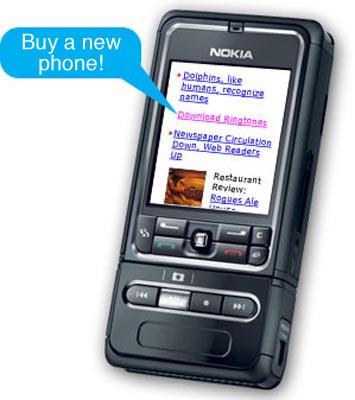
Seeing mobile companies use advertising against one another is certainly nothing new, but there are at least two companies using a new technique to convince mobile users to upgrade their handsets. The tactic is called "intercept campaigning," and it involves using code in a mobile ad to detect which device the user has and, if it senses that a certain brand or phone is accessing the ad, suggests switching or upgrading to a new phone. One real-life example of this marketing is Nokia and its advertising for the Twist: the ad was targeted at Motorola RAZR owners surfing the web and, if a RAZR accessed the ad, it would ask the user "Are you really still rockin' a flip phone?" and suggest picking up a Twist. RIM is also said to be guilty of intercept campaigning, telling non-BlackBerry users to "See the difference" and urging owners of older 'Berries to "Do more" by purchasing an updated model.
This type of advertising isn't really anything new, but it's not something that we've seen very much in the mobile world, especially with newer tech that allows the ads to detect exactly which device or brand is being used to access the ad. As we enter 2011 and the mobile industry gets more and more heated, don't be surprised to see ads for competing devices and platforms while you're browsing around the web. For example, ad company Crisp Media admits to creating ads for Sprint that targeted iPhone owners and urged them to switch to one of the Now Network's Android handsets. What do you all think about intercept campaigning? Is it something that would actually get you to pay attention to ads while browsing the web and maybe even convince you to upgrade, or will you flick by all of the marketing without even a glance?
Via Engadget, Wall Street Journal (Image via WATBlog)